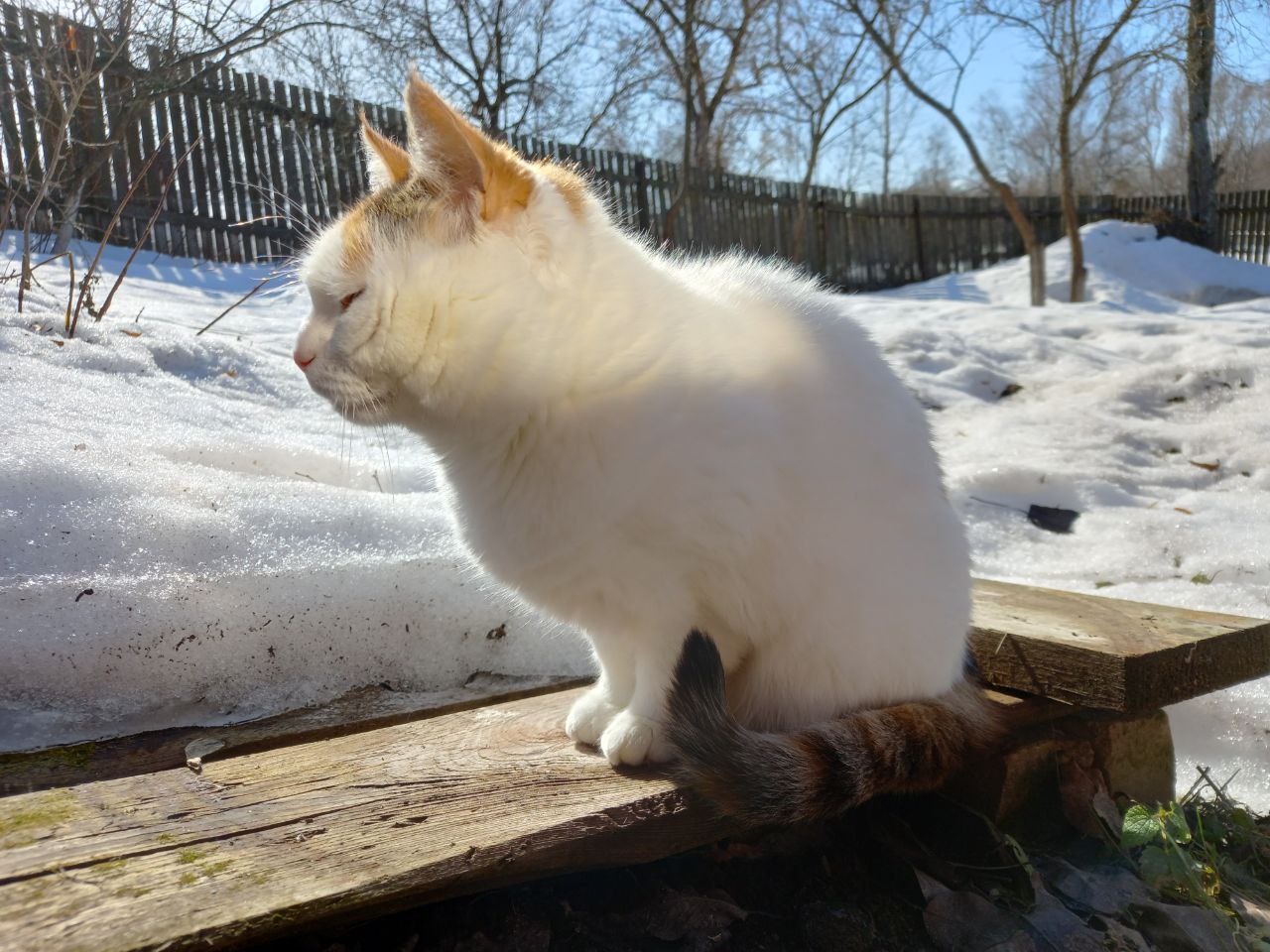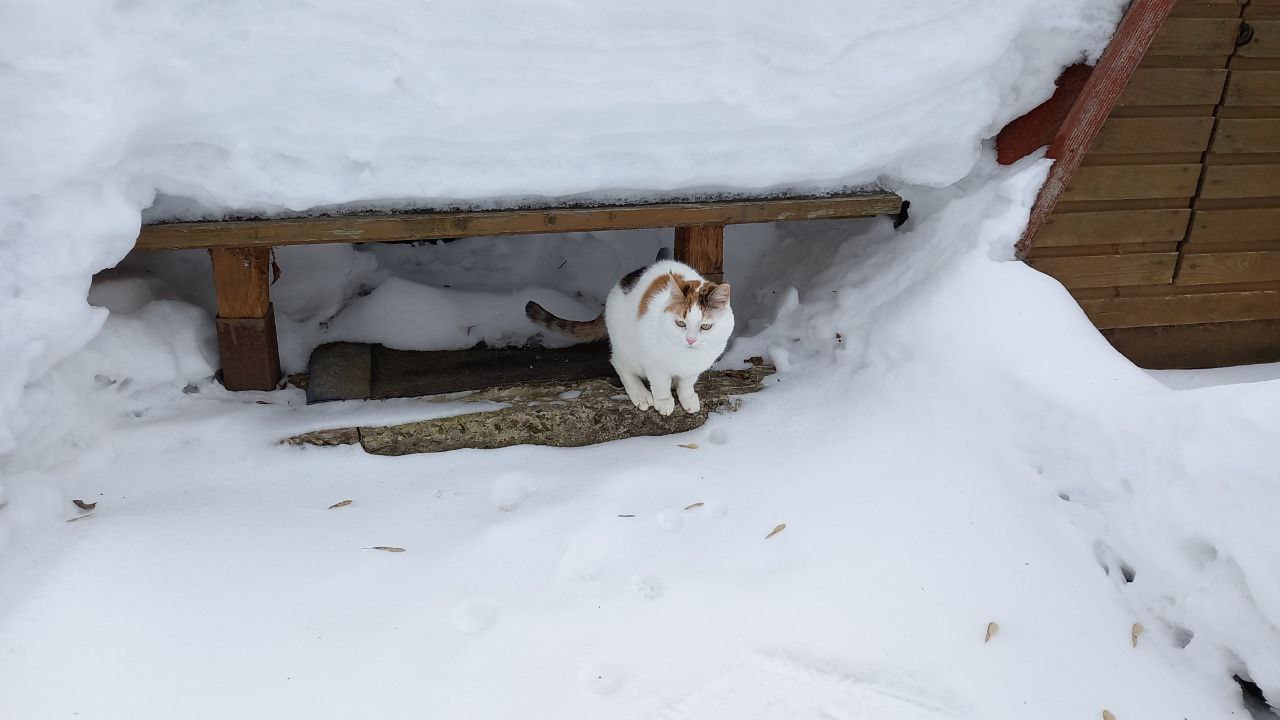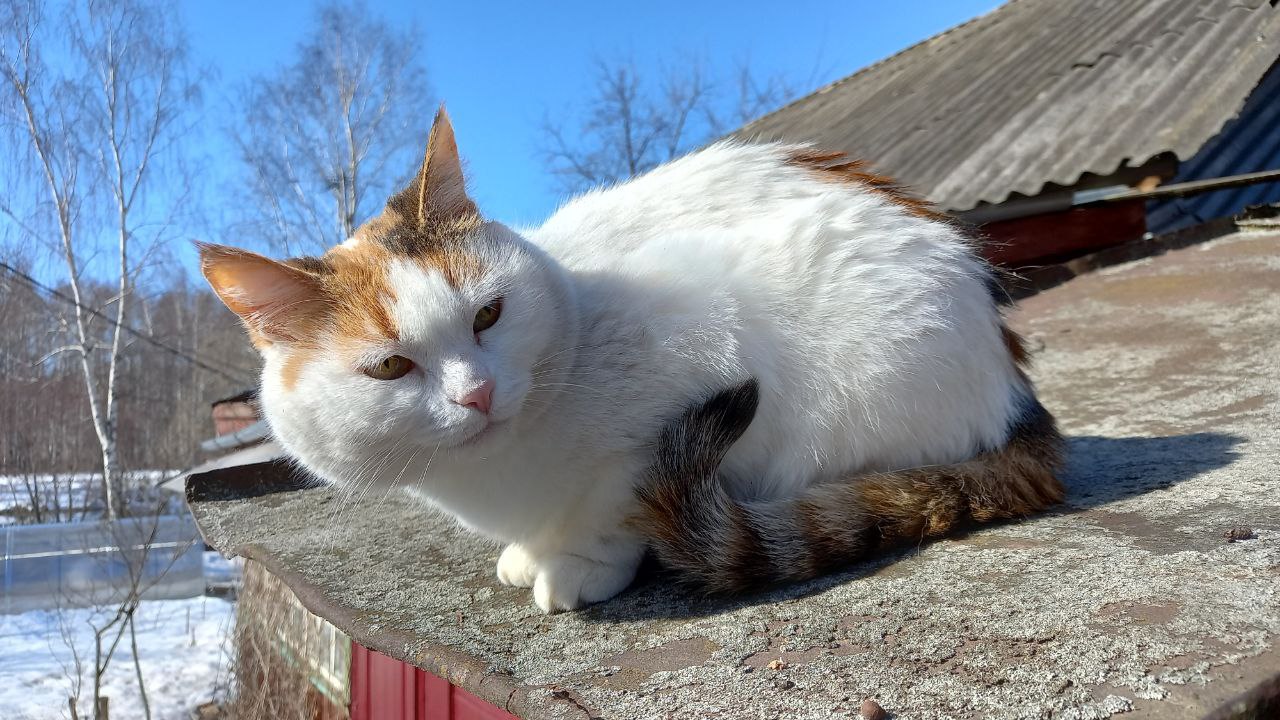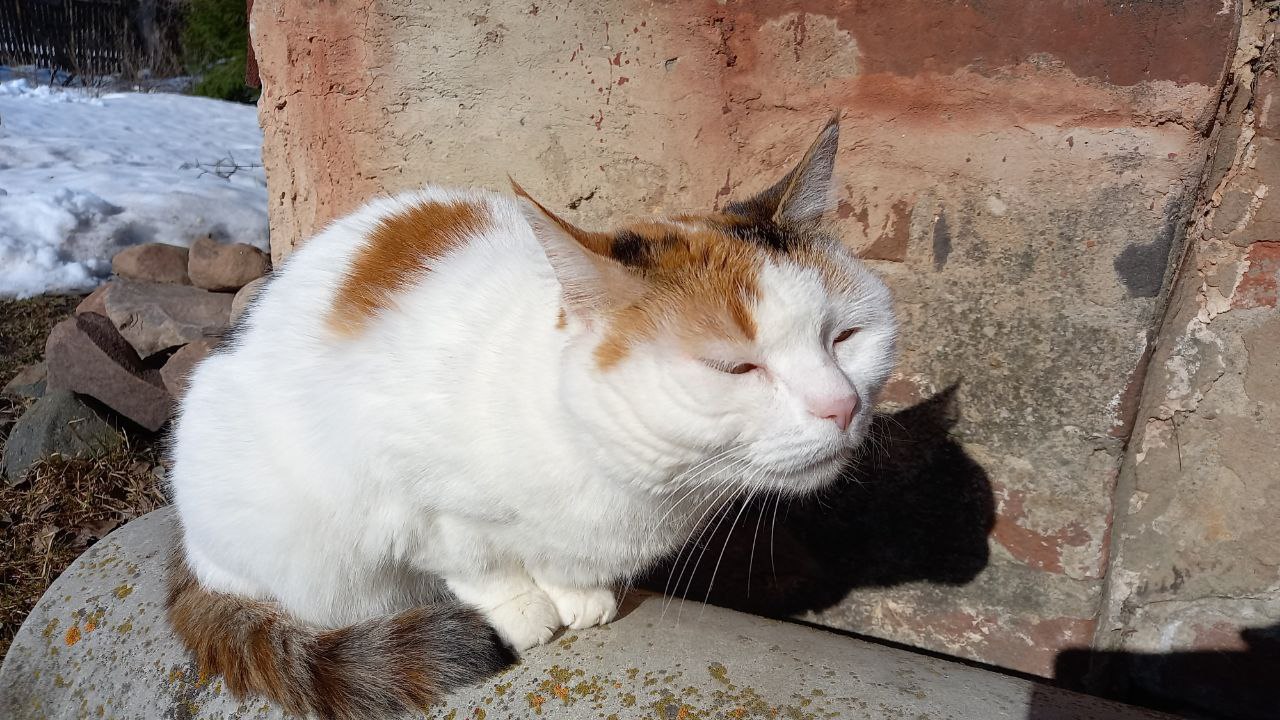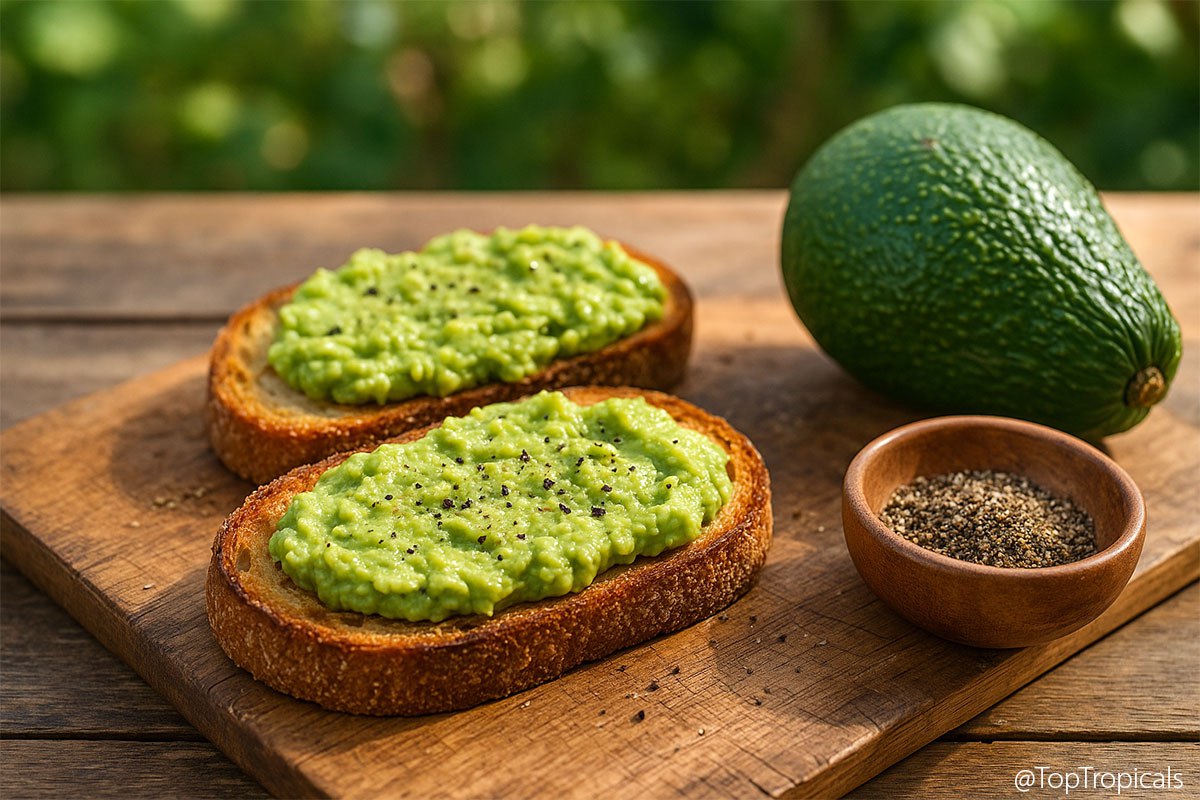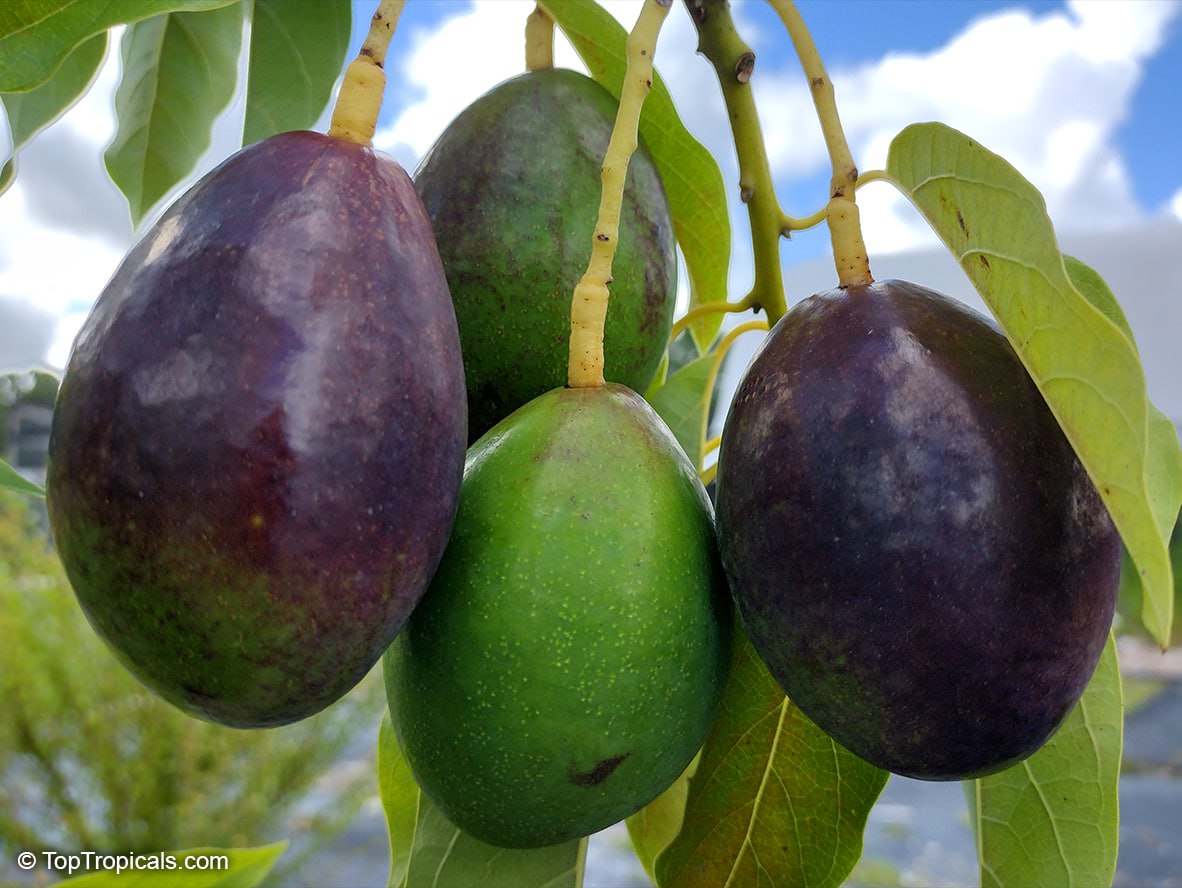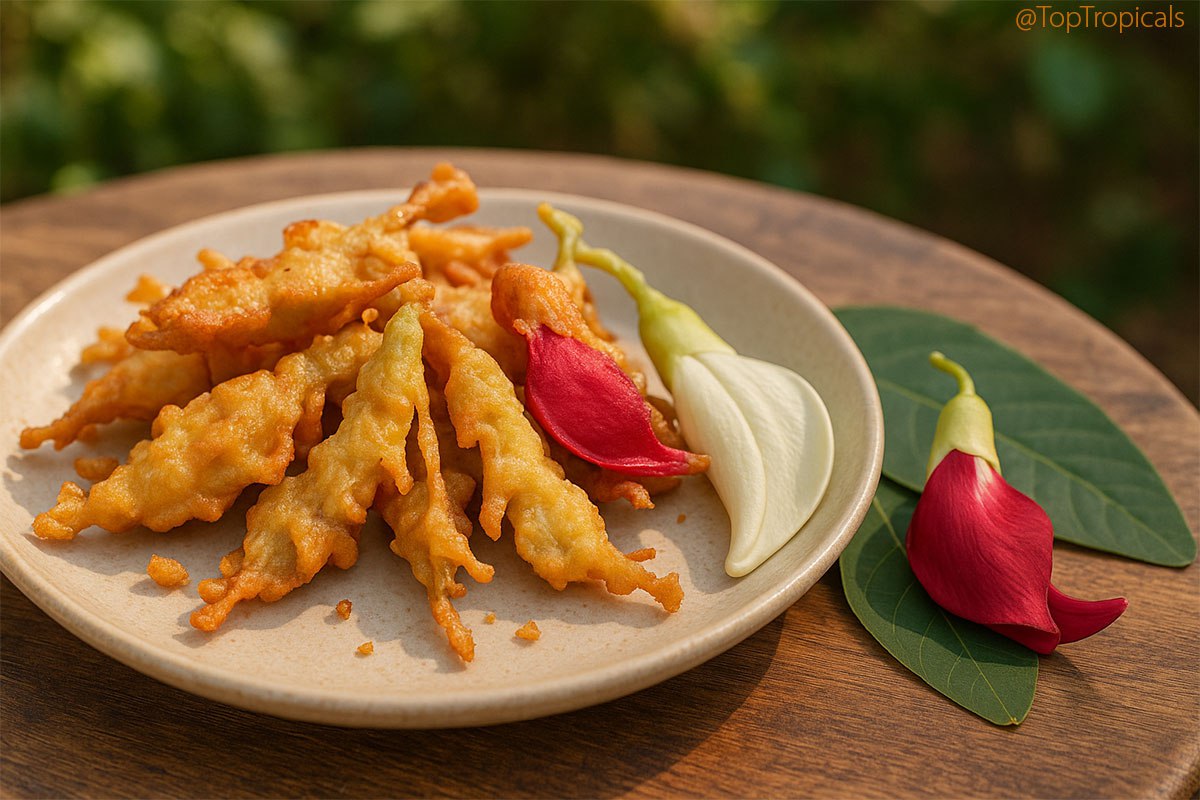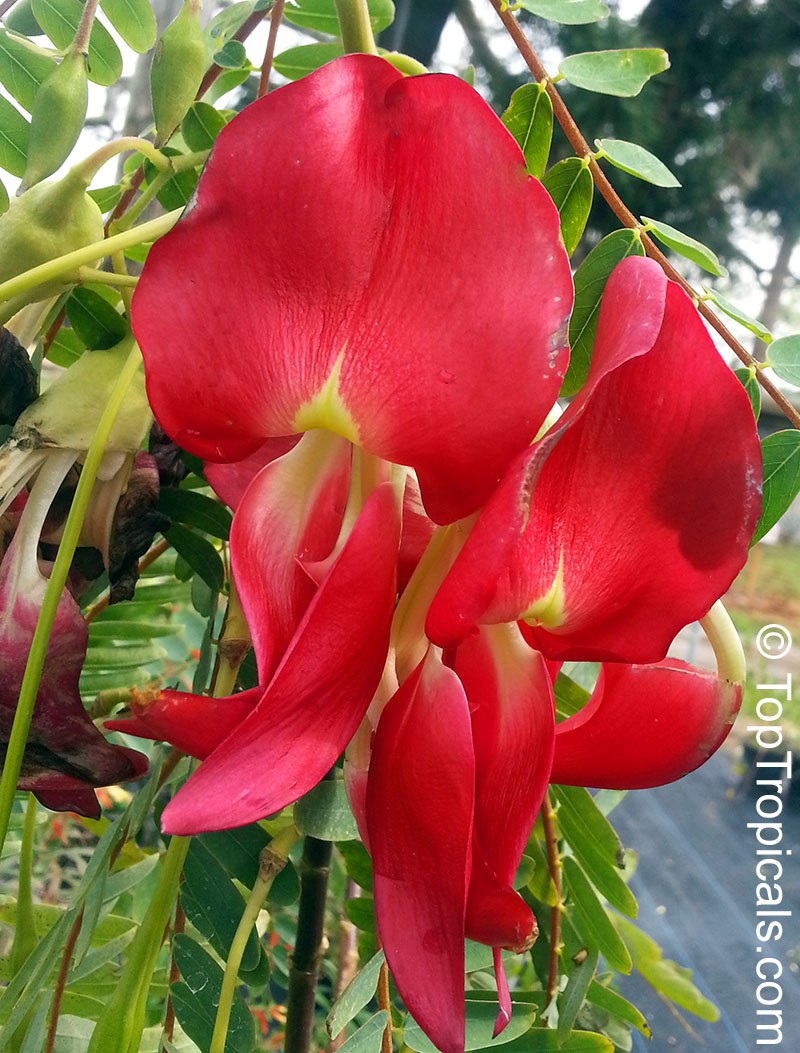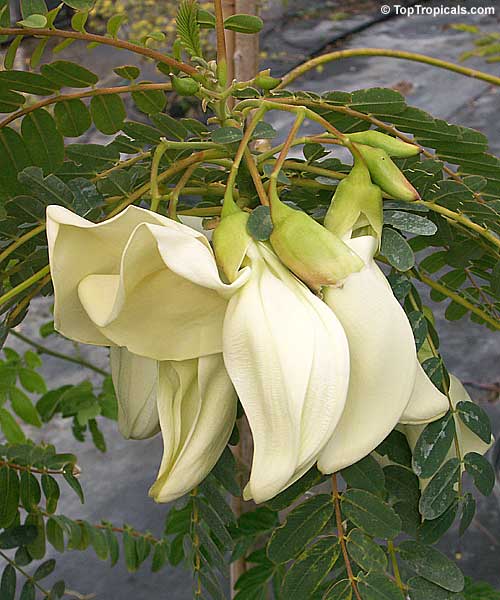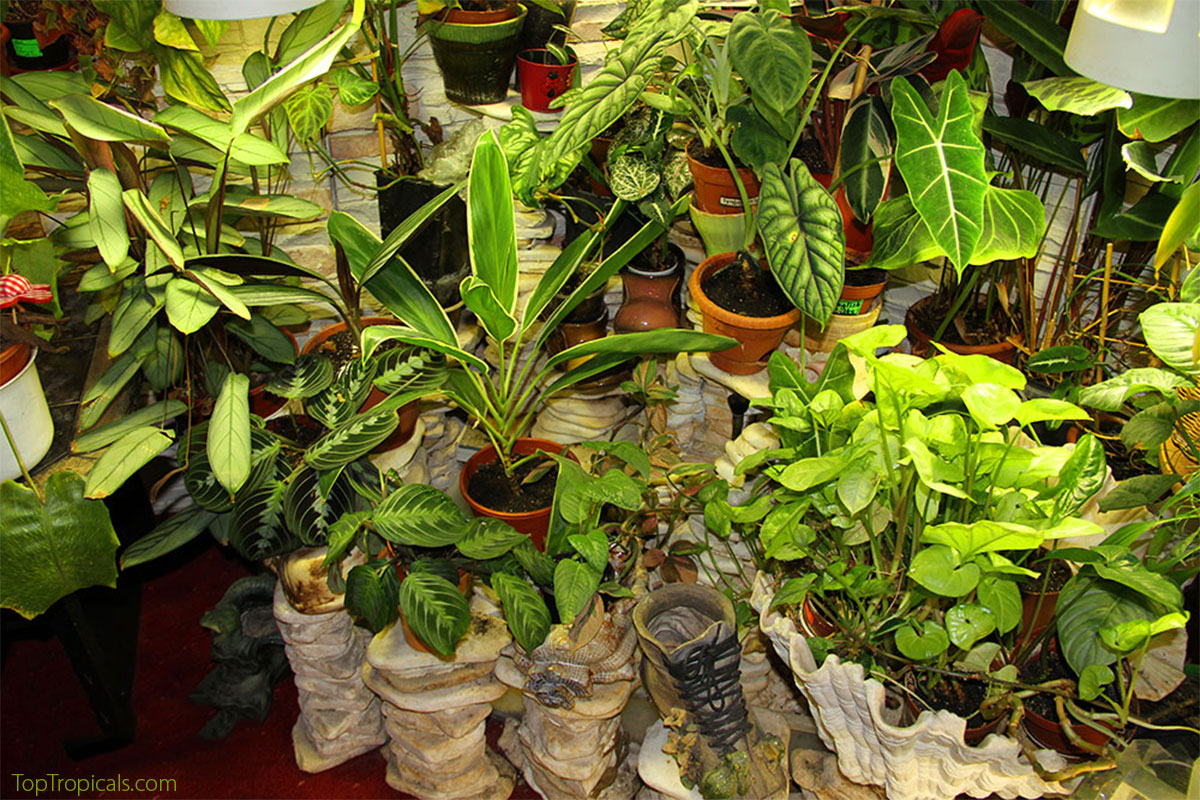Garden Blog - Top Tropicals
Greetings from outside of Tropics: Masyanya
🐈📸 Cat Masyanya, a friend of PeopleCats.Garden.
Masyanya lives in a snowy village by Vladimir city, Russia.
Her message to us: "You guys are lucky to live in the Tropics in Peace, and have TopTropicals by your side who can send you tropical plants! And here... some day the Spring will come, and the Happiness will overcome. Be grateful for what you got - Happy Holidays! Love and Peace" 💕 🕊️
#PeopleCats
🟢 Join 👉 TopTropicals
Floridians, mark your calendar: December 13, 2025 - Holiday Plant Market!
🔴 Welcome to the Holiday Plant Market, proudly hosted by the #PeopleCats of TopTropicals.
🔴 Why you should come
🔴 What makes this event special
🔴 Holiday extras
King is on gate duty (checking every car, as usual).
Paisley is rearranging plants for the tenth time this morning because he wants them perfect.
Snitch is already relaxing in a chair, supervising with a cup of iced tea.
Persephone is under the tables, greeting guests from the Underworld.
Sushi and Loki are grooming - getting ready for the guided tours.
Together they invite you to stroll the gardens, snack on a donut, enjoy holiday music, and pick out something tropical and beautiful to take home.
It is December in Florida - warm breeze, sunshine, and perfect planting weather. While the rest of the country is scraping frost off windshields, you're choosing which banana tree to take home. Come enjoy a colorful Saturday surrounded by plants, music, snacks, and friendly #PeopleCats. This is your holiday escape, your plant-hunting adventure, and your chance to bring home something amazing before the season ends.
We bring out the biggest, rarest, most impressive plants we grew all summer.
Trees with developed branches, vines ready to take off, fragrant blooms that stop people mid-walk.
Everything looks better by December in Florida, and this is the day we put it all on display!
- 30% OFF online prices
- FREE plant with purchase
- $5-10 specials
- Mini donuts and holiday treats
- Cold drinks, iced tea, citrus-infused water
- Tropical Christmas music playing all day
- Cat-guided tours from our PeopleCats (they know the garden better than we do) - Subject to Purrrson's schedule/availability
- Exciting Raffle prizes
- Fruit tasting table (subject to enough ripe fruit in the morning!)
📱 Event discounts and specials valid at both locations:
✦ Ft Myers Garden Center: 13890 Orange River, Ft Myers, FL
✦ Sebring Farm: 9100 McRoy Rd, Sebring, FL
🎁 Learn more about this Event, Holiday deals and extras
📱 Watch this bird-eye video from the past events:
Avocado miso toast-up: quick-n-fun exotic recipes
🟢Mash ripe Avocado with a tiny pinch of miso.- 🟢Spread on warm toast and hit it with crushed black pepper.
🛒 Plant several varieties and always have Avocado in season
📚 Learn more:
- · Avocado Variety Guide
- · Posts about #Avocado
- · Avocado tree (Persea americana) in Plant Encyclopedia
#Food_Forest #Recipes #Avocado
🟢 Join 👉 TopTropicals
Whats in the pantry today?
Cat Bob in a food pantry
"Finders keepers" - Publius Syrus (1st century BC writer)
🐈📸 Cat Bob found a sweet spot in a food pantry, watching that no one else takes it at TopTropicals PeopleCats.Garden
#PeopleCats
🟢 Join 👉 TopTropicals
Whats for breakfast? Guava versus Banana

Smokey: Guava for fiber, banana for power. Pick wisely. Sunshine: I pick whatever requires zero effort. Smokey: So... guava in a hammock. Perfect.
Some mornings you want something light. Some mornings you want something that hits like a tiny energy bomb. That’s why people always compare guava and banana. Both are everywhere, easy to eat, and trusted since forever - from Ayurveda scrolls to modern nutrition charts.
But they’re not the same kind of morning fruit. Let’s walk through them like we’re in the kitchen deciding what to slice first.
- 🍉 Guava - the fiber champion
Guava looks innocent, but it’s one of the most nutrient-dense fruits.
Per 100 g: 68 calories, 5.4 g fiber, over 200 mg vitamin C, a little protein, and solid potassium.
Fiber does most of the work. It smooths digestion, keeps you full, and steadies blood sugar. Vitamin C boosts immunity, and antioxidants reduce inflammation. Studies suggest guava lowers LDL and triglycerides. Not bad for a tennis-ball-size fruit.
- 🍌 Banana - the quick energy classic
Bananas are the opposite personality: soft, sweet, ready in seconds.
Per 100 g: 89 calories, 22 g carbs, good potassium, and a little vitamin B6.
Bananas give fast energy without upsetting the stomach. Athletes eat them before workouts because carbs, sugars, and potassium wake up your muscles. Vitamin B6 helps mood and brain function, which is why a banana on a groggy morning works wonders.
They also pack antioxidants, polyphenols, and heart-protective compounds. Even the peel has nutrients (though not exactly breakfast-friendly).
📊 What studies say - quick notes
- · Guava: anti-inflammatory, anti-hypertensive, anti-obesity, antioxidant, antidiabetic, antidiarrheal, boosts hemoglobin, supports dental health.
- · Banana: antioxidants, fiber, vitamins C and E, carotenoids, flavonoids, and heart-protective compounds.
🔮 What Ayurveda says
- · Guava calms Pitta and Kapha - great for acidity or sluggish digestion.
- · Bananas balance Vata - grounding and nourishing - but can raise Kapha at night. Morning banana = good. Night banana = maybe skip.
🏆 Guava or banana - which one wins?
Both win, just in different ways:
- 🍉 Pick guava for:
· light, high-fiber start
- · better digestion
- · steady energy
- · low calories
- · weight control
- 🍌 Pick banana for:
· instant energy
- · easy digestion
- · pre-workout boost
- · quick carbs
- · soft, comforting fruit
- 🍉 Slow mornings love guava.
🍌 Busy mornings belong to banana.
For home growers
If you live in a warm climate, both fruits are incredibly rewarding to grow.
🍉 Why grow guava?
- · Fruits in 1-2 years.
- · Compact for small yards or containers.
- · Super productive when mature.
- · Needs only sun, warmth, and pruning.
- · Homegrown flavor is sweeter and more aromatic.
🍌 Why grow banana?
- · Grows fast and looks lush.
- · One mat can feed a whole household.
- · Dwarf varieties fit small gardens.
- · Homegrown bananas taste richer and creamier.
- · When a bunch ripens, breakfast is handled for a week.
Growing your own fruit means you’re never out of a healthy breakfast. Something is always ripening, always ready to pick, and always sweeter than anything you buy.
✍️ Scientific reference
- · USDA National Nutrient Database: Banana, raw. Guava, raw.
- · Journal of Food Biochemistry: Antioxidant and anti-atherosclerotic potential of Banana.
- · International Journal of Pharmaceutical Sciences Review and Research: Guava (Psidium guajava). A brief overview of its therapeutic and health potential
- · International Journal of Innovative Research in Engineering & Management: An analysis of health benefits of guava.
🛒 Grow your perfect breakfast for any day - Guava and Banana
📚 Learn more:
- 🟡More posts about #Bananas and #Guava
- 🟡From Plant Encyclopedia: Banana and Guava plants
- 🟡Guava beats banana in the potassium game
📱 Watch YouTube short videos:
#Food_Forest #Bananas #Guava #Remedies #Discover
🟢 Join 👉 TopTropicals
See how Golden Rain turns pink overnight!
Golden Rain tree, Koelreuteria paniculata
- 🌸 Golden Rain tree, Koelreuteria paniculata, is one of those plants you can drive past a hundred times without realizing you’re looking at a seasonal firework show. In early summer it loads itself with long, bright yellow flower clusters that drip from every branch. Then, just when you think the show is over, the tree shifts into its second act: paper-thin pink seed lanterns that cover the canopy through fall.
- 🌸 It’s surprisingly tough for such a delicate-looking tree. Cold hardy, drought tolerant, and fast growing, it fits easily into Florida and other warm climates where people want a shade tree that also puts on a real spectacle. The foliage stays elegant and airy, and the lantern pods look good long after the flowers fade.
- 🌸 If you’re into trees that change looks through the seasons and don’t need pampering, Golden Rain tree is one of the most rewarding additions you can plant.
🛒 Plant impressive Golden Rain tree - hardy and beautiful
📚 Learn more:
- ▫️More about Golden Rain tree - Koelreuteria paniculata - from Plant Encyclopedia
- ▫️ Time to plant the Golden Rain Tree
#Trees
🟢 Join 👉 TopTropicals
Sesbania flower fritters: quick-n-fun exotic recipes
🔴Dip hummingbird tree flowers (Sesbania grandiflora) in light batter and fry until crisp.- 🔴Delicate, floral, and fun to snack on.
🛒 Add Hummingbird tree edible flowers tree to your garden
📚 Learn more:
- ▫️ Sesbania grandiflora in Plant Encyclopedia
- ▫️Why it's called Hummingbird Tree
- ▫️Bird-looking flowers: you can eat the whole tree
#Food_Forest #Recipes
🟢 Join 👉 TopTropicals
Date:
🌿 Bring the Jungle Inside: Winter Survival Guide Part 2: Temperature ❄️

Smokey: "This side is 58 F. Completely unacceptable."
Sunshine: "My side is warm and cozy. Completely acceptable."
Smokey: "How are you always on the better side of physics?"
🌡️ TEMPERATURE: THE TROPICAL DORMANCY LINE
Most tropicals stop growing below 70 to 75 F. They stay green, but their engine shuts down.
Below 70F:
- Water intake drops.
- Roots slow down.
- Fertilizing becomes risky.
- Root root becomes easy.
If you WANT your plants to grow in winter, you must take care of everything: Warmth, light, humidity, water. It all works together.
- Aim for 75 F with bright light. Water lightly. No fertilizer.
- Watch out for drafts. Cold windows. Door blasts. Garage entryways. Even one gust can trigger leaf drop.
- Vents are the opposite problem: hot, dry, dusty air. That gives you crispy edges and mites. Root zone temperature matters just as much as room air. Your thermostat may say 72 F, but your pot on a tile floor may be sitting at 55 F. Fix this by elevating pots on boards or stands. Use Styrofoam. Never keep pots directly on cold tile o windowsill
- Extra winter heat: Space heaters are fine if used smartly. Do not blow hot air directly on plants. Keep heaters away from cords, trays, and water. Oil filled radiators are the safest option for plant rooms.
- Use a humidifier if you want growth or want to prevent spider mites. But do not blow mist directly onto leaves. Always place the unit lower than the plant canopy.
- Grouping helps. Put tropical plants close together to share humidity. Do not mix succulents with humidity lovers.
- Cats and dogs love to knock over lights and stands. Secure your fixtures. Trust us.
- Airflow: Light airflow is healthy. Direct fan blast is not. Still, dry corners invite mites.
- A mild night drop is OK. A big one below 55 F will stop growth completely.
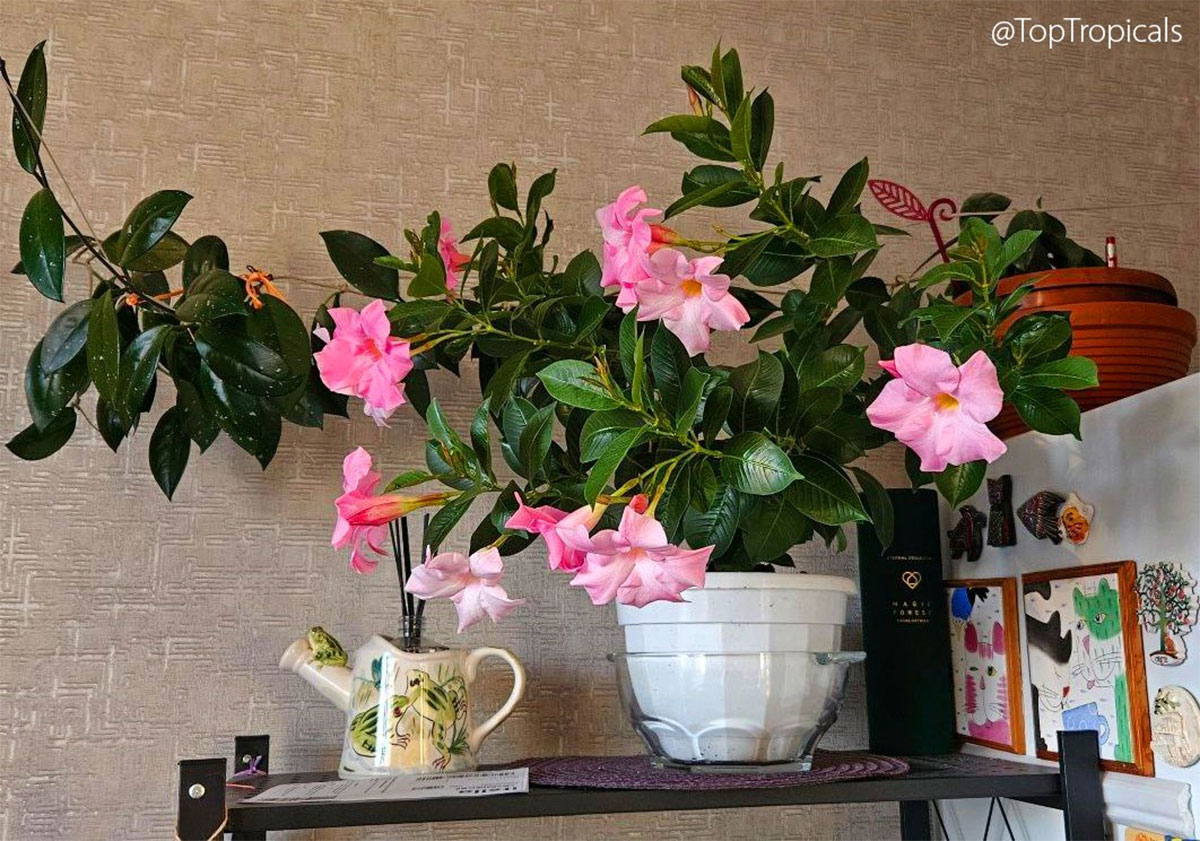
A mandevilla thriving indoors with bright pink blooms and glossy green leaves.
☂️ PLACEMENT: MICROCLIMATES RULE EVERYTHING
Indoors is one big tradeoff: light but cold near windows, warm but dim away from them. The winning combo is a warm room with supplemental light.
Best zones to keep plants in winter:
- South or east windows with additional light
- Warm living spaces
- Bright bathrooms for natural humidity
Worst zones to keep plants in winter:
- Behind curtains
- Directly on windowsills
- Near heaters or vents
- Against cold exterior walls
- Dark corners without supplemental lighting
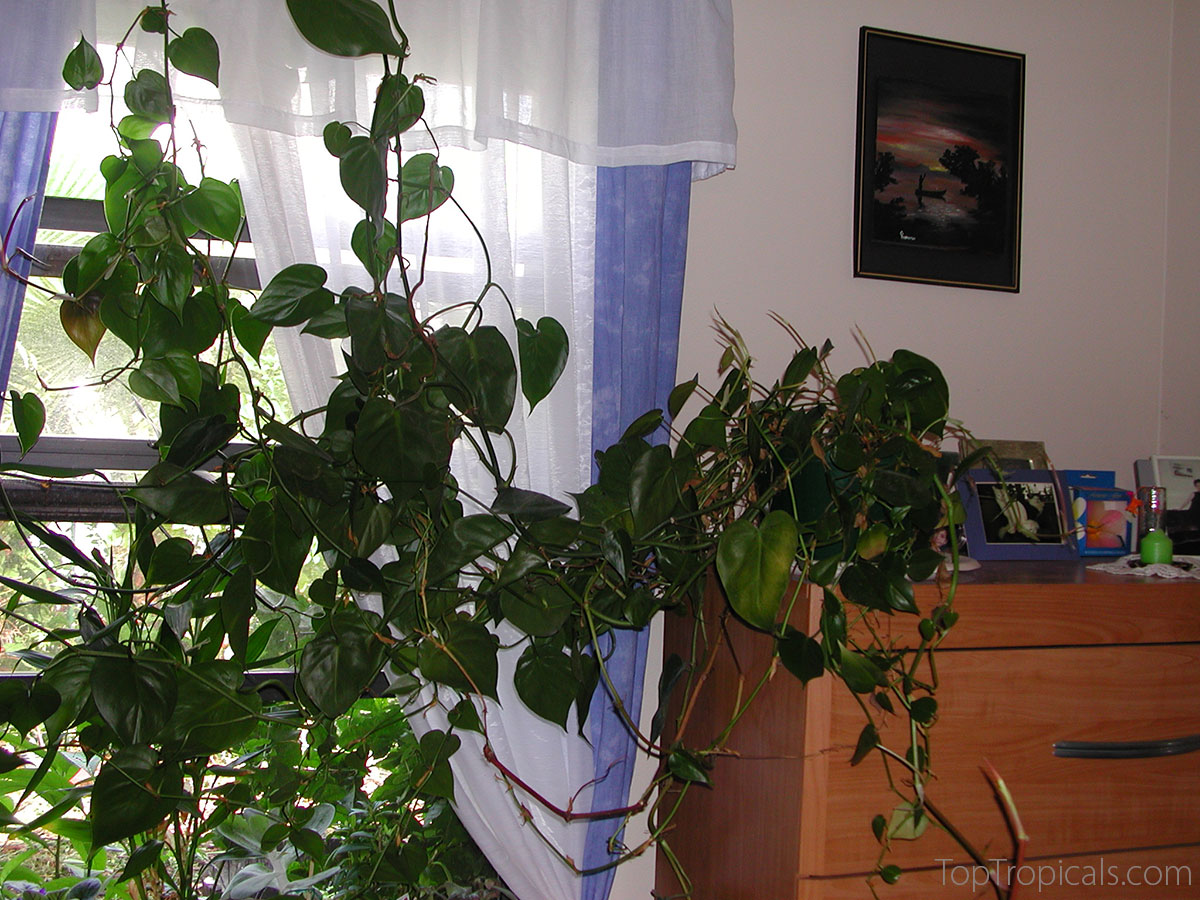
A vigorous indoor philodendron stretching across the window.
💨 ACCLIMATION
Moving a plant from outdoors to indoors is a shock. Light drops. Humidity drops. Airflow stops. Soil cools. Even healthy plants may drop some leaves for a few weeks. That is normal.
Before you bring them inside:
- Rinse foliage to remove dust and pests. We recommend Sunshine NoBug - and organic, safe solution.
- Check for ants.
- Trim weak branches.
- Treat soil if fungus gnats are present.
Try to bring plants inside before the first cold front, not after. If you are reading this too late, do the prep now and expect a little leaf drop.
If you nail light and temperature, winter becomes simple. In the next mail-list we will cover watering, fertilizer timing, humidity, and other indoor tricks that keep tropicals happy till spring. Stay tuned.
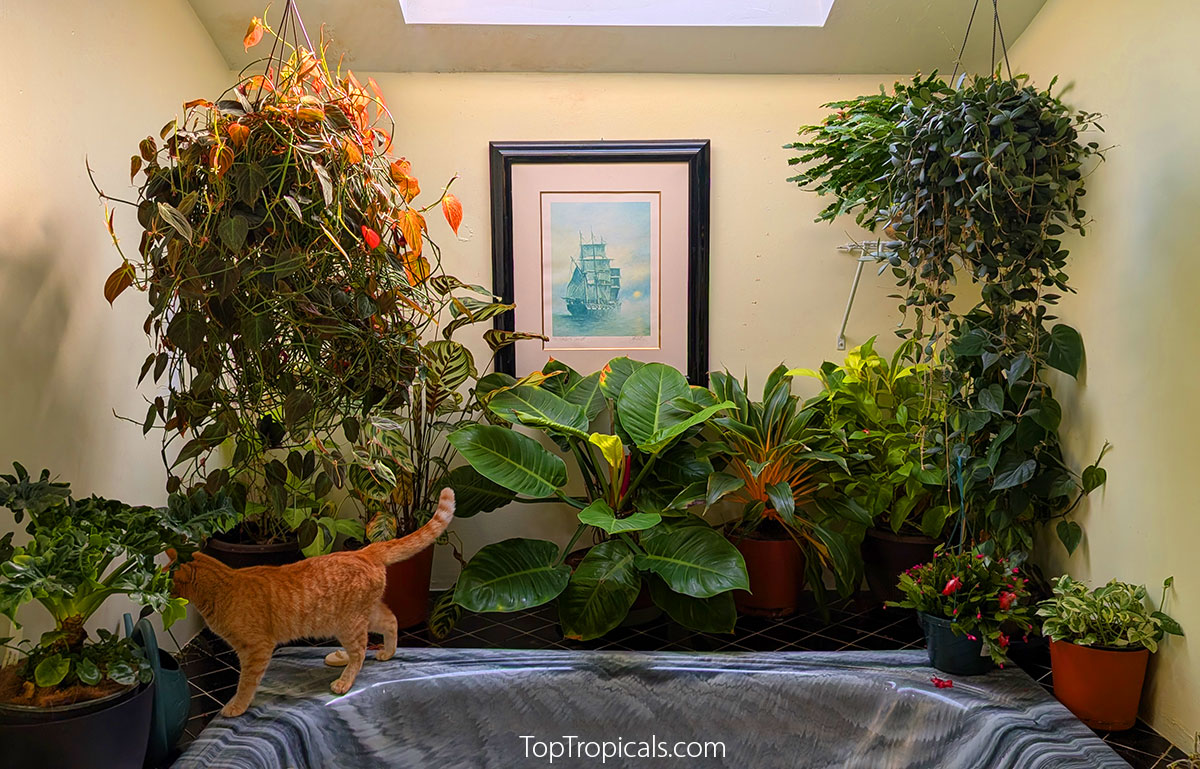
Cat Bob is inspecting his indoor garden around the tub with a bright skylight
✔️ WINTER INDOOR FAQ: TEMPERATURE AND PLACEMENT
Q: Why are leaves dropping only on the window side?
A: Cold glass. The room may be warm, but the glass surface can be much colder.
Q: Is a cold room OK for tropicals?
A: They may survive, but they will not grow below about 65F to 75F. When nights stay below 65F for a week, many plants enter dormancy.
Q: My room feels warm. Why is my plant still not growing?
A: Check the soil temperature. Pots on cold tile can be 10 to 20F colder than the air.
Q: Can plants sit directly on the floor?
A: Not on cold tile. Always elevate them on boards, stands, or trays.
Q: Is it OK to keep plants near a heater or vent?
A: No. Vents and heaters blast hot, dry air and cause crispy leaves and mites.
Q: My plant is dropping leaves after coming indoors. Why?
A: Normal acclimation to reduced light and humidity right after the move.
Q: Can I keep plants in a bright bathroom?
A: Yes. Bathrooms can have good humidity. Just keep pots off cold tile.
Q: Do I need a humidifier?
A: Not for survival. Yes if you want better growth and fewer pests like spider mites.
Q: Do I need a grow tent?
A: No. A bright LED plus a warm room is enough for winter holding.
Q: Should I fertilize in winter?
A: Not now. Winter fertilizer rules will be covered in the next mail-list.
Q: Should I water the same as in summer?
A: No. Indoor plants need much less water in winter. Watering rules also coming soon.
📚 Learn more:
- Bring the Jungle Inside: Winter Survival Guide Part 1: Lighting
- SUNSHINE NoBug - Natural Plant Protector
- How to overwinter tropical plants indoors
- Feeding indoor plants
- Overwintering Adeniums outside of tropics
Date:
🌿 Bring the Jungle Inside: Winter Survival Guide Part 1: Lighting ❄️

Smokey: "Winter lighting must be precise. I need this light exactly at 14
inches."
Sunshine: "Sure. I am holding this… little number thing."
Smokey: "It reads humidity. Your main job is to look cute."
🌞 LIGHT, TEMPERATURE, PLACEMENT
Winter indoors is a different kind of battlefield. Dark rooms. Dry air. Cold windows. Random drafts. Weak light. Sad plants. We've been talking about keeping your tropicals alive outdoors previously. But some of you have no choice this time of year. You have to bring the jungle inside.
If that is you, then this is your plant survival guide.
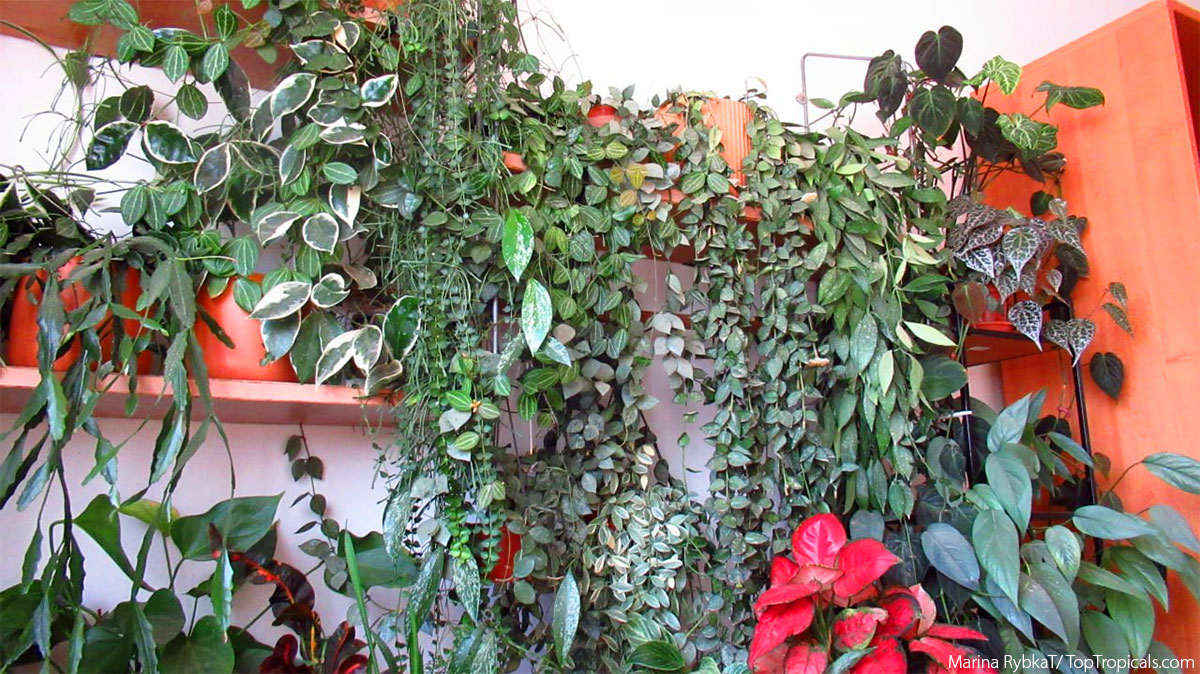
☀️ LIGHT: THE WINTER LIFELINE
Light advice here comes straight from our in-house expert, Michael Dubinovsky, a high-tech lighting engineer with over 30 years of hands-on experience. If he says brightness beats hours, trust him.
Here is the truth: Indoor light in winter is 10 to 50 times weaker than outdoors. Short days. Low-angle sun. Windows filtering half the useful light. It all adds up.
Tropicals need 10 to 12 hours of real brightness. Winter sun cannot do that on its own. Not even in a big window. So we help them.
Use bright LED shop lights or utility lights. 5000K to 6500K CCT. High lumen output. Skip decorative bulbs. Skip purple grow fancy toy lights. If you want a single plant light, even a clamp lamp is fine if you screw in a bright daylight LED bulb.
Panels work best for plant clusters. Bars for shelves. Bulbs for single plants. And grouping plants under one bright panel always beats spreading them out.
Distance matters: keep LEDs about 12 to 18 inches above the leaves. Too close: leaf burn. Too far: stretching, weak stems.
Leaves reaching up? Light is too high or too weak. Leaves curling down? Light is too close.
If you want a reality check, download any smartphone lux meter app. Most indoor corners are 50 to 200 lux without supplemental light. Tropicals want much more
And a quick tip about windows: winter sun comes in sideways. A spot that looks bright at noon can go dull by 2 PM. Don't count of window light
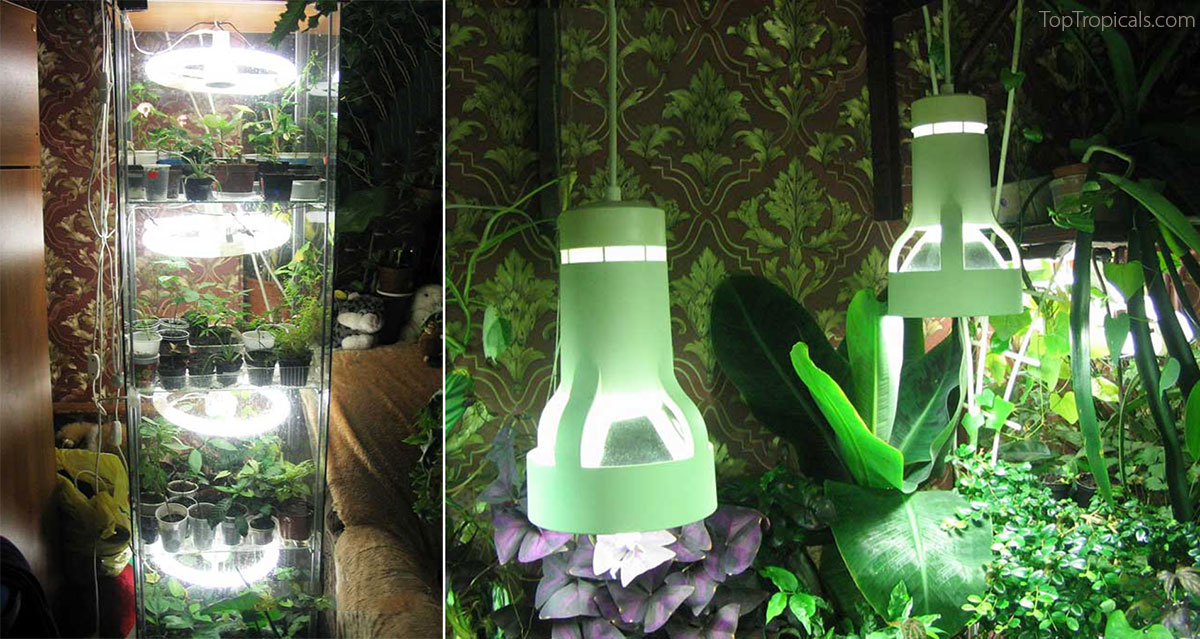
Bright light or long hours
People try to fix weak light by running it for 16 or 18 hours. That does not work. Plants care more about light intensity. A few hours of strong light beats all-day dim light. If the light is weak, adding more hours will not change anything except your electric bill.
Simple rule: Short duration but bright is always better than long duration but weak. - by Michael, Top Tropicals lighting expert
No need for fancy horticultural panels
You do not need purple grow lights. You do not need special horticultural fixtures. You do not need expensive panels unless you want real winter growth.
For winter plant holding till spring, the inexpensive solution works great:
- Bright LED daylight bulbs (5000K to 6500K) from hardware store
- High lumen output
- Inexpensive clamp lamps
- Aim directly at the plant from 12 to 18 inches
This setup keeps tropicals happy until spring without buying anything fancy. Save the money for soil, pots, or your next plant.
Indoor plant lighting safety note:
- Use timers. Keep cords dry. Do not overload outlets.
- Do not hang lights over humidifiers.
- And do not put fixtures on piles of books to raise them. People do this.
✔️ WINTER INDOOR FAQ: TEMPERATURE AND PLACEMENT
Q: I am in Home Depot. Which light do I buy?
A: LED shop light, daylight color (5000K to 6500K), high lumens. Skip fancy plant bulbs.
Q: Can I use clamp lamps or floor lamps for plants?
A: Yes. Clamp lamps with a bright daylight LED bulb work great for winter holding.
Q: Do I need special horticultural grow lights?
A: No. A bright LED daylight bulb works fine for winter. Save the fancy lights for real growth projects.
Q: How far should the light be from the plant?
A: About 12 to 18 inches above the leaves. Too close burns. Too far stretches.
Q: Can I run weak lights for 18 hours to compensate?
A: No. Weak light plus long hours still equals a weak plant. Brightness matters more than hours.
Q: How do I know if a spot is bright enough?
A: Use a free phone lux app. Most indoor corners are much too dim for tropicals.
Q: I have a huge window. Why do I still need LEDs?
A: Indoor winter light is weak, short, and filtered by glass. Plants want intensity, not just a big window.
Q: My window faces north. Now what?
A: North windows are decorative only. Use supplemental lighting or move the plant.
📚 Learn more:
What Timo hides in the bathroom
🐈📸 Cat Timo is a big fan of tropical plants. He guards them in the bathroom with a big skylight - lots of light and Green Magic - that's the key to his green thumb secret!
TopTropicals PeopleCats.Garden
#PeopleCats
🟢 Join 👉 TopTropicals
